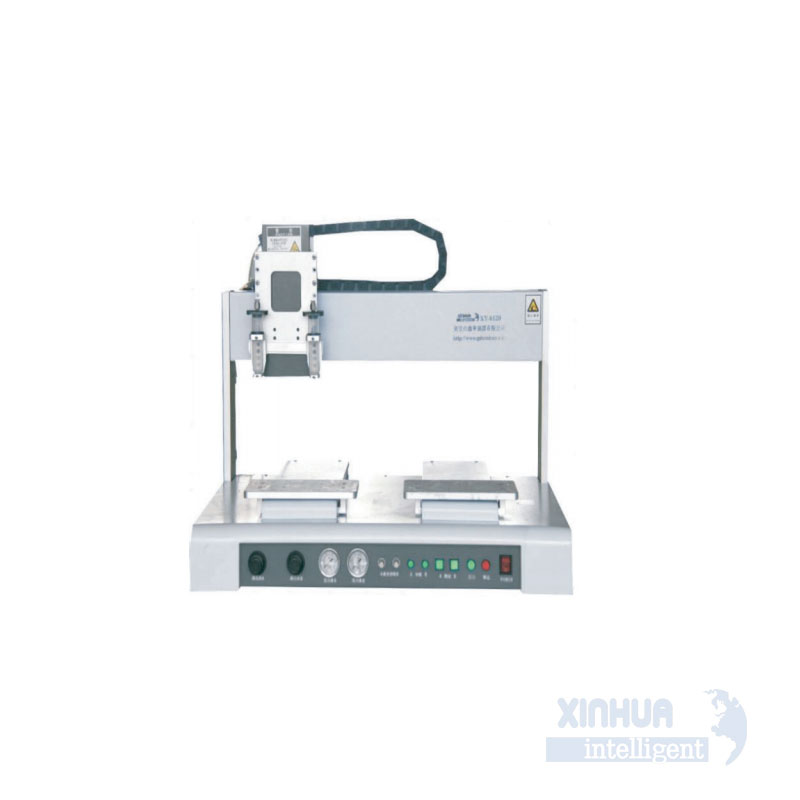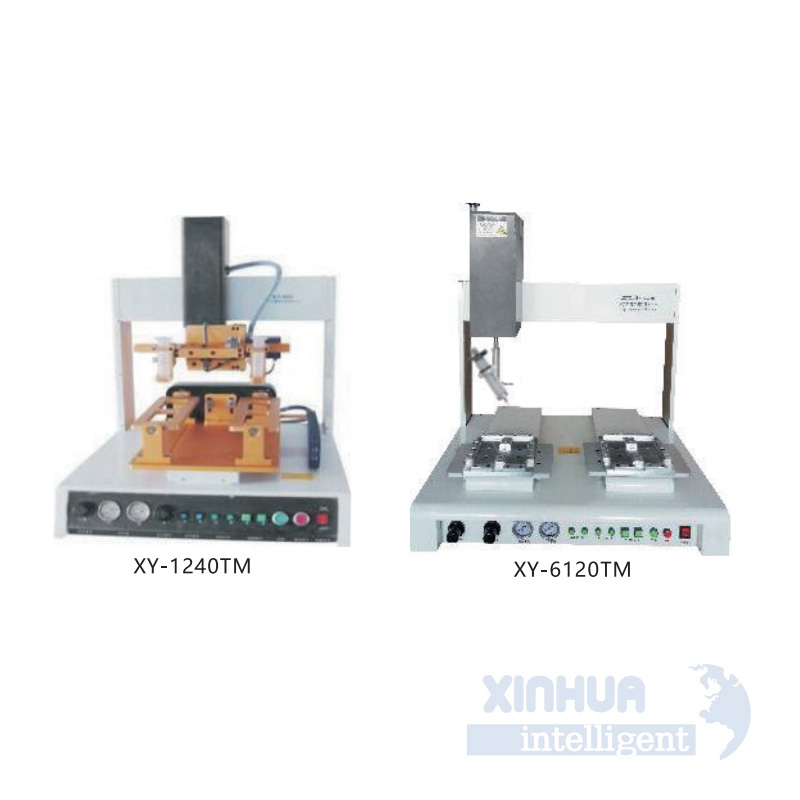
Title: Overcoming Challenges with Dual Component Glue Potting Machines in Precision Manufacturing
In today’s high-demand manufacturing landscape, precision, consistency, and efficiency are not just goals—they’re necessities. One of the critical technologies enabling these standards is the dual component glue potting machine, a cornerstone in industries ranging from electronics to automotive. These machines automate the dispensing and mixing of two-part adhesives or encapsulants, offering superior bonding, sealing, and protection for sensitive components.
However, like any advanced system, dual component glue potting machines come with their own set of challenges. In this article, we’ll explore the most common pain points manufacturers face, delve into practical and technical solutions, highlight real-world applications, and conclude with how partnering with a reliable supplier like Xinhua Intelligent can make all the difference.

—
1. Common Pain Points or Challenges
Despite their advantages, dual component glue potting machines are not without complexities. Manufacturers often encounter several recurring issues that can impact productivity, quality, and cost-efficiency:
A. Mixing Ratio Inconsistencies
One of the most critical aspects of dual-component systems is maintaining the correct mix ratio between part A (resin) and part B (hardener). Even minor deviations can lead to incomplete curing, reduced mechanical strength, or compromised chemical resistance.
B. Material Waste and Clogging
Due to the reactive nature of two-part resins, material waste can be significant if the system isn’t properly purged or cleaned after use. Additionally, clogged nozzles or static mixers can cause downtime and inconsistent dispensing.
C. Viscosity Management
Different materials have different viscosities, and managing them effectively across varying temperatures and pressures can be challenging. High-viscosity materials may require preheating or pressure adjustments, which adds complexity to the process.
D. Integration with Existing Production Lines
Many manufacturers struggle with integrating automated glue potting systems into existing workflows. Compatibility issues with PLCs, MES, or robotic arms can slow down deployment and increase training costs.
E. Process Validation and Traceability
Modern production lines demand traceable, repeatable processes—especially in regulated industries like medical devices or aerospace. Lack of data logging, calibration tracking, or error diagnostics can hinder compliance efforts.
—
2. Practical and Technical Solutions
To overcome the above challenges, manufacturers must adopt both strategic planning and technological innovation when deploying dual component glue potting machines.
A. Precision Metering and Mixing Systems
Advanced metering units with closed-loop feedback ensure accurate and consistent mix ratios. Servo-driven pumps and digital flow control valves allow for micro-adjustments, ensuring that even small variations in viscosity or ambient conditions are compensated automatically.
B. Self-Cleaning and Anti-Clogging Technologies
Modern systems now include automatic cleaning cycles using solvent flushes or disposable static mixers. Some machines also feature anti-drip valves and heated hoses to prevent premature curing and nozzle blockages.
C. Smart Material Handling and Environmental Controls
By incorporating temperature-controlled material tanks and viscosity compensation algorithms, manufacturers can maintain optimal dispensing performance regardless of external conditions. This is especially crucial in cleanroom environments or outdoor operations where thermal fluctuations occur.
D. Seamless System Integration
Look for potting machines designed with open communication protocols such as EtherCAT, Modbus TCP, or PROFINET. These enable easy integration with factory automation systems, allowing centralized monitoring and control via SCADA or MES platforms.
E. Data Logging and Predictive Maintenance
Equipping the machine with IoT-enabled sensors allows for real-time monitoring of key parameters like pressure, flow rate, and cycle time. This data can be stored for quality audits or used in predictive maintenance models to anticipate failures before they occur.
—
3. Real-World Applications
The versatility of dual component glue potting machines makes them indispensable across multiple industries. Here are some key applications where these systems deliver measurable value:
A. Electronics Manufacturing
In consumer electronics and industrial controls, components such as PCBs, connectors, and sensors are often potted with epoxy or polyurethane to protect against moisture, vibration, and dust. For example, power supply modules and LED lighting assemblies rely on precise potting to meet IP67 or higher ingress protection ratings.
B. Automotive Industry
From EV battery packs to engine control units (ECUs), dual-component potting ensures long-term reliability under extreme temperatures and mechanical stress. The automotive sector increasingly uses thermally conductive potting compounds to manage heat dissipation in electric vehicles.
C. Medical Devices
Medical equipment such as diagnostic sensors, infusion pumps, and wearable monitors require biocompatible potting materials. Accuracy and repeatability are paramount here, as even minor inconsistencies can affect device functionality and regulatory compliance.
D. Renewable Energy
In solar inverters and wind turbine controllers, potting protects sensitive electronics from environmental exposure. Dual-component silicones are often used due to their excellent UV resistance and flexibility over wide temperature ranges.
E. Industrial Automation
Automation cabinets, relays, and motor drives are frequently potted to extend service life and reduce maintenance needs. In smart factories, the integration of potting machines into robotic assembly cells enables lights-out manufacturing and batch traceability.
—
4. Conclusion & Call to Action

Dual component glue potting machines are more than just dispensing tools—they are integral to achieving high-quality, scalable, and compliant manufacturing. By addressing the common pain points through innovative engineering and intelligent design, manufacturers can unlock new levels of efficiency and product reliability.
As industries continue to evolve toward automation and Industry 4.0, the importance of selecting the right potting solution becomes even more pronounced. Whether you’re potting delicate sensors or rugged industrial components, having a trusted partner with proven expertise can make all the difference.
At Xinhua Intelligent, we specialize in designing and delivering high-performance dual component glue potting machines tailored to your specific application needs. With our advanced metering systems, integrated software controls, and comprehensive support services, we empower manufacturers to achieve precision, consistency, and scalability.
Ready to optimize your potting process?
Contact Xinhua Intelligent today to schedule a consultation or request a demo. Let us help you turn complex challenges into streamlined success.
—
Author Bio:
This article was written by the technical content team at Xinhua Intelligent, a leading provider of automated dispensing and potting solutions for global manufacturing. With years of experience in adhesive handling and process automation, Xinhua Intelligent delivers cutting-edge equipment designed for accuracy, durability, and ease of integration.

